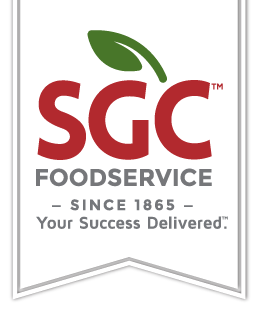In the quest for healthier eating habits, subtle changes can make a significant difference. Surprisingly, something as seemingly minor as font size can play a role in influencing customers' food choices when dining out. Let’s explore how font size can be a subtle yet effective tool for encouraging patrons to make more nutritious selections on a restaurant menu or simply showcasing the items that your restaurant is trying to promote to your customers.
The Psychology Behind Font Size:
· Larger for Healthier Options: Use a larger font size for menu items that are healthier or have lower calorie counts. This subtly draws attention to these choices, making them more noticeable. Naturally people are going to be more drawn to the areas on a menu that have the large font or different font. When a menu is the same size font throughout, but there are some incenses that there is large font, then they are going to go to that area first.
· Smaller for Indulgences: Conversely, opt for a smaller font size for indulgent or less healthy items. This downplays their prominence on the menu, making customers take a second more when choosing them. If your menu holds more of these types of options, then use these techniques on items you are wanting your customers to be more draw to.
Creating a Visual Hierarchy:
· Headers and Titles: Use larger, bold fonts for headings and titles like "Healthy Choices" or "Nutritious Selections." This establishes a clear visual hierarchy. Any heading or title that you want to really emphasize should be used by this technique. That will be how your customers are drawn to that area of the menu and will be able to find some items that they may be looking for.
· Menu Item Names: Slightly larger fonts for the names of dishes can make them stand out. For example, "Grilled Salmon" could be slightly larger and that would allow customer’s eyes naturally to go there on a menu. Some restaurants will highlight their healthier menu options for their guests to go to first rather than more of the higher calorie meals.
· Descriptions: Provide detailed, enticing descriptions for healthy dishes, using a readable font size. This helps customers better understand the appeal of these options. Not every guest is going to want to search for a healthier option on the menu. The way that the descriptions are set may influence someone to give a healthier option more of a try.
Pricing and Font Size:
· Emphasize Value: Use a slightly larger font for the prices of healthier items or any item you are wanting to really highlight for your guests to see. This can give the impression of better value for those nutritious choices. Customers want to be given the best bang for their buck, so showing the value is extremely important.
· Subtle Price Reduction: If feasible, consider subtly reducing the font size of higher-priced, less healthy items to nudge customers toward more affordable, healthier alternatives. This can also be done by for certain items that you are trying to steer your guest to or away from. This technique can be used in many different circumstances.
Mobile and Responsive Design:
· Consistency Across Devices: Ensure that your font choices and sizes remain consistent across different devices and screen sizes. What looks good on a desktop should also be easy to read on a mobile phone. Many restaurants forget to make the mobile experience just as good as a desktop experience and that is where they fail. Customers do not want to come across a mobile menu and have a hard time reading it or accessing it. Consistent information across all menus and giving your customers no trouble when trying to access your menu will bring positive results to your business.
Testing and Feedback:
· A/B Testing: Experiment with different font sizes and styles to see which combinations work best for your target audience. A/B testing can provide valuable insights. When testing, be sure to keep things consistent. If there are too many changes or areas you are trying to test, it may be unclear to what performed the best when looking back at the tests.
· Customer Feedback: Encourage customers to provide feedback on your menu design. They may offer insights into what influenced their choices as well as what ended up being ordered more than other items and if the way the layout of the menu had any change on their buying decisions.
While font size may seem like a minor detail in menu design, it can have a powerful impact on customers' food choices. By strategically using font size to emphasize healthier options and other key items you are wanting to promote, restaurants can play a role in promoting healthier eating habits among their patrons as well as showcase special items that they are wanting to influence.

_3fbpfogr.jpg)